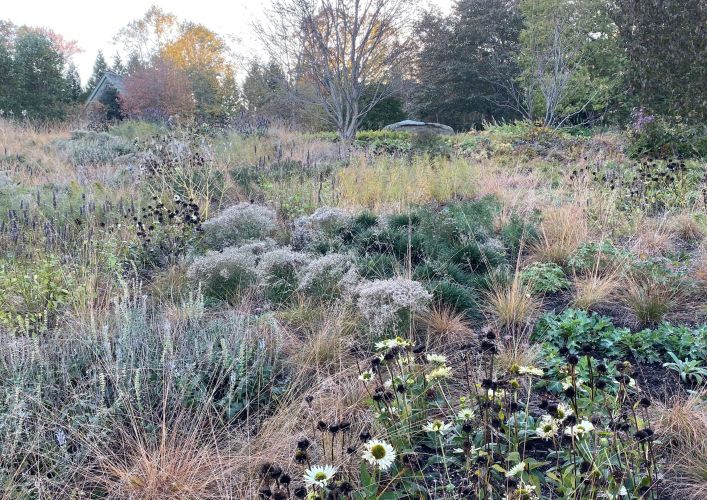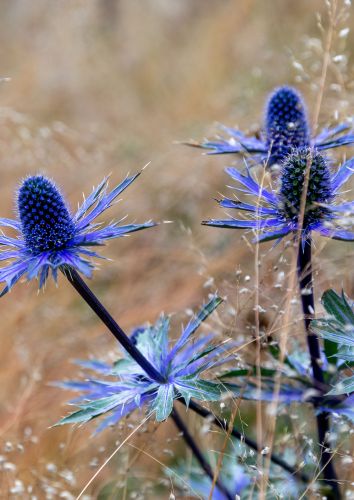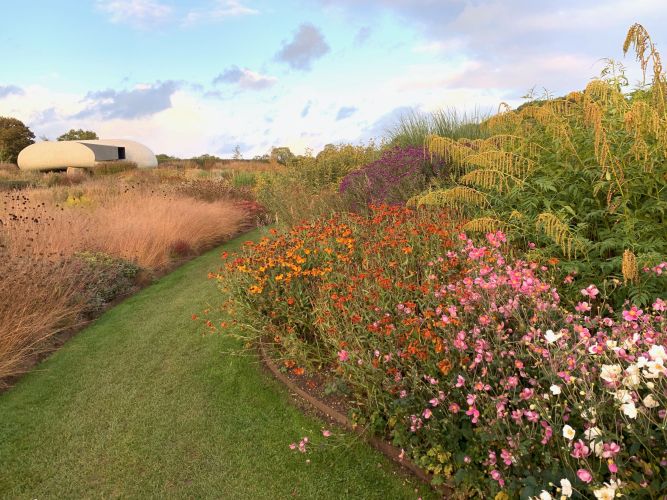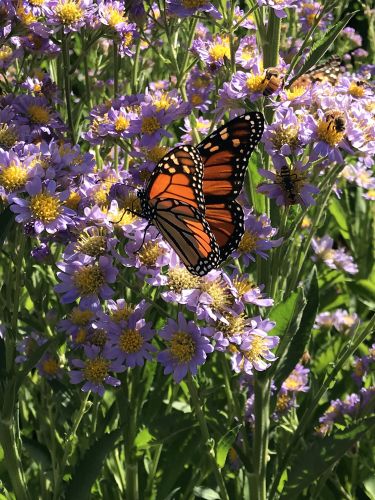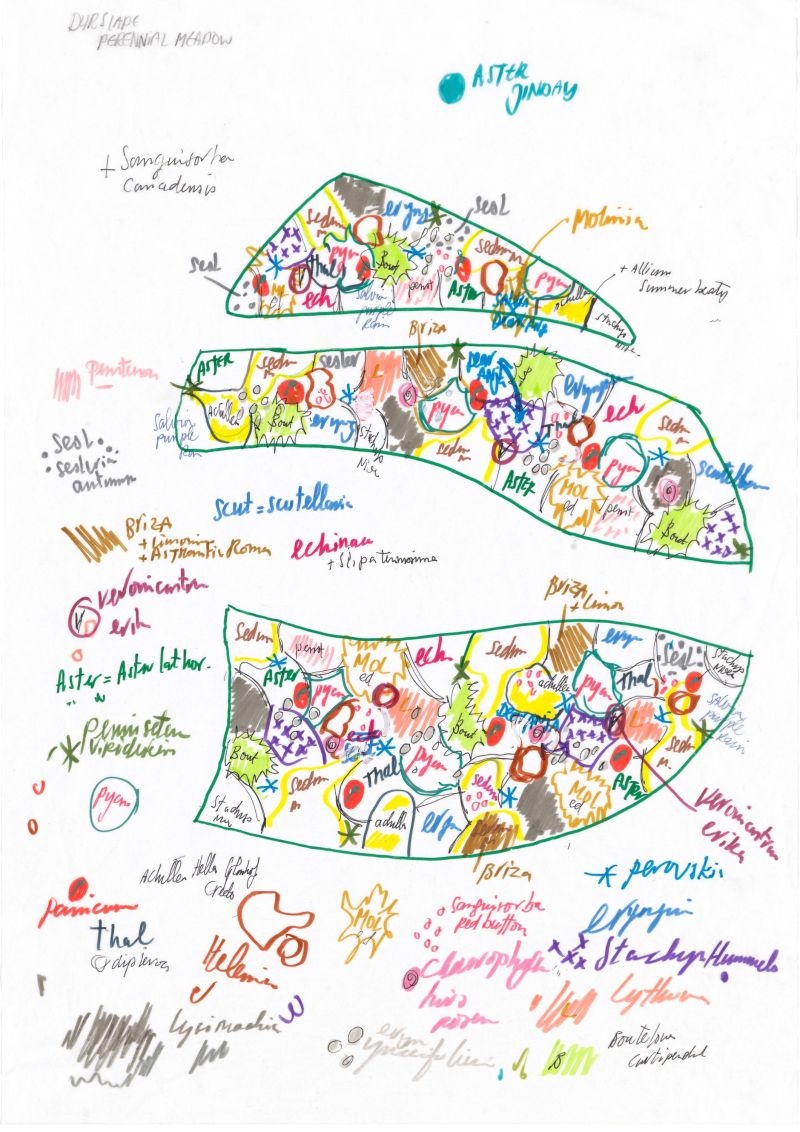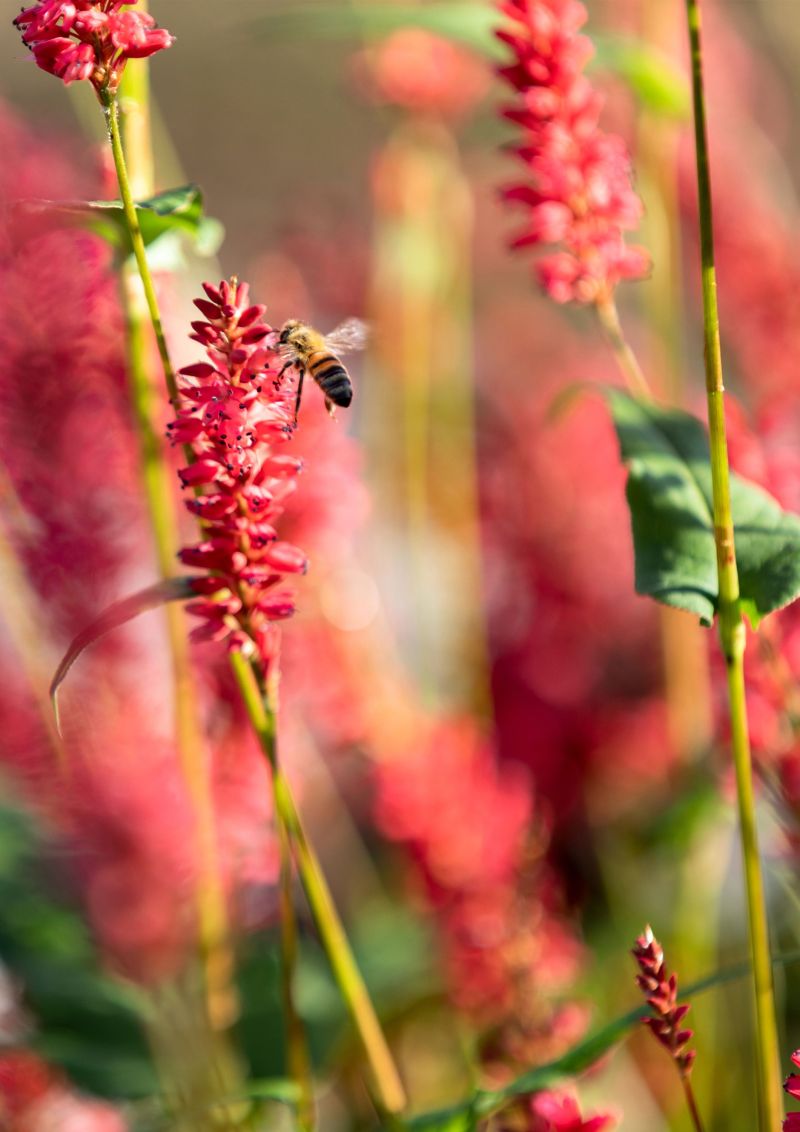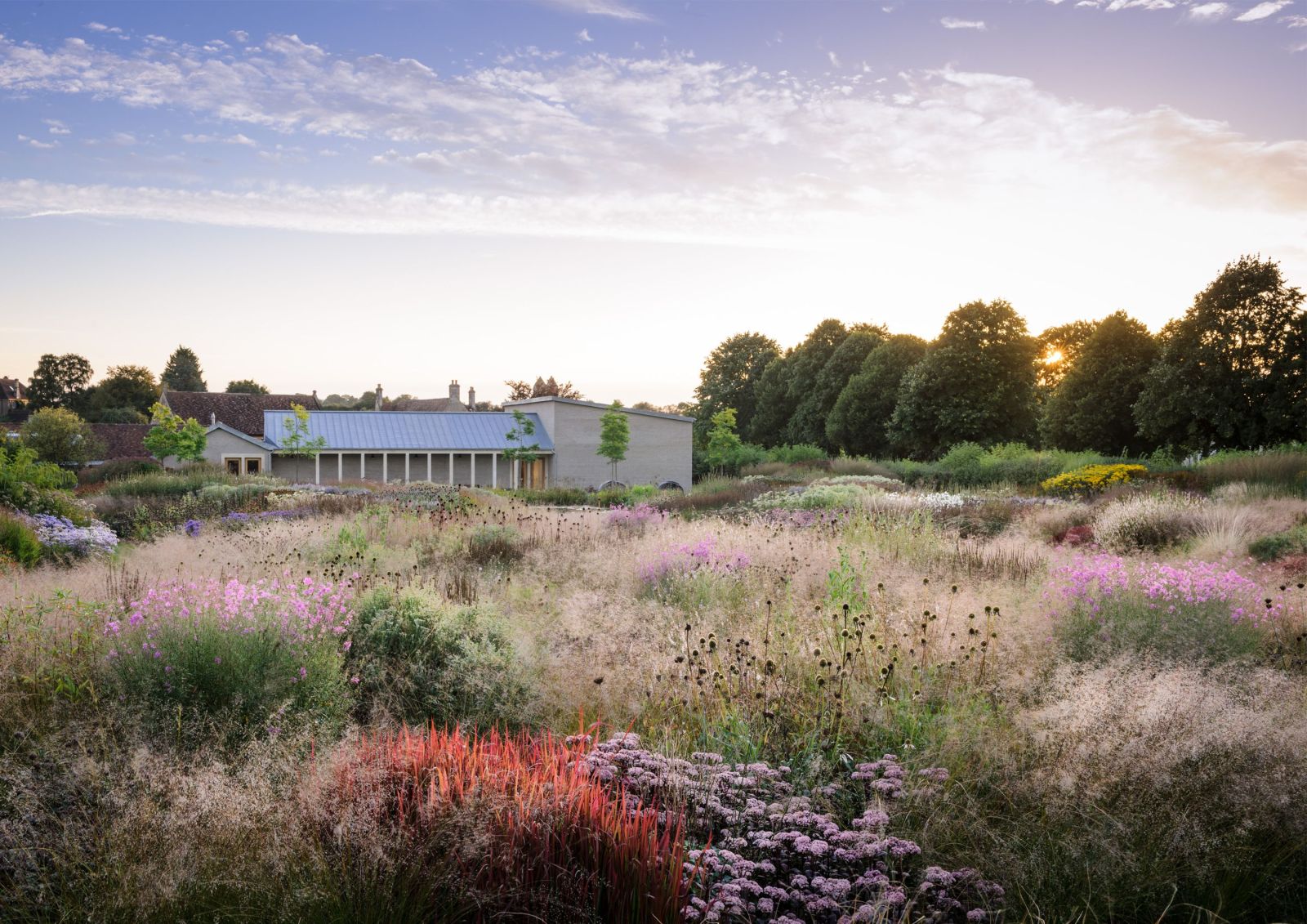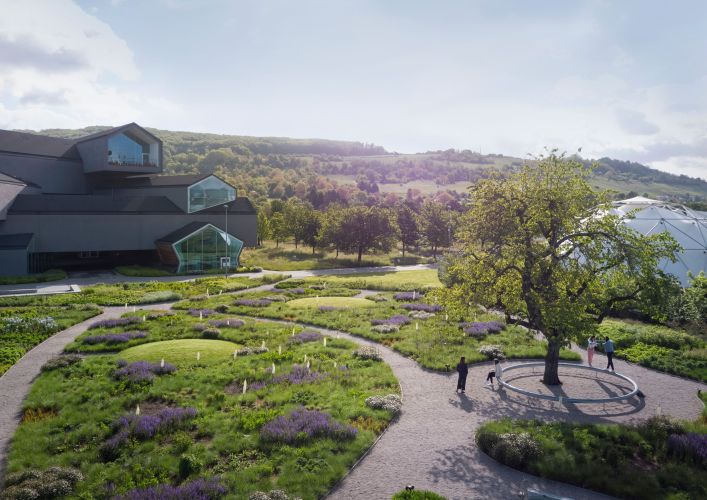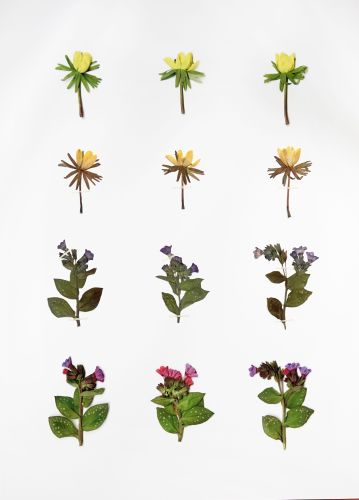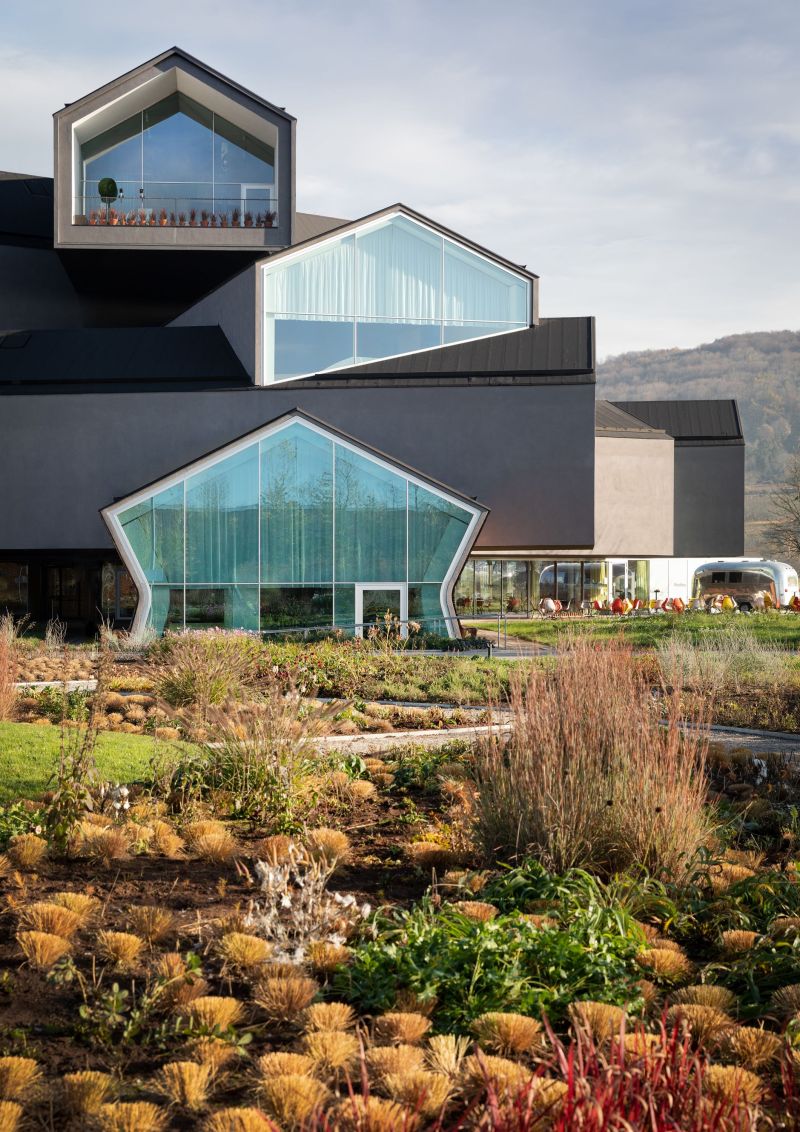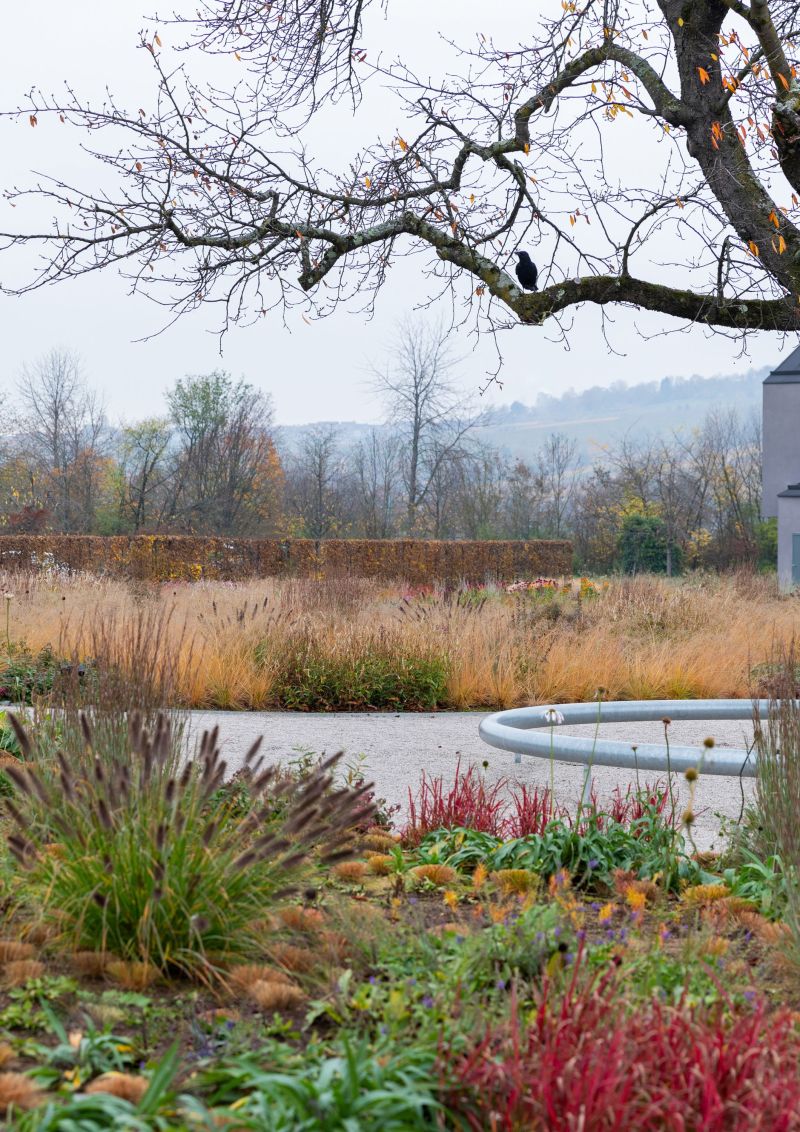The wisteria surrounding his farmhouse in Hummelo is just as beautiful as 12 years ago. Anja, his wife, is still wearing an amusing hat. The garden is still just like a fairy-tale even though the famous grasses have not yet come into bloom. Apart from that, there is also the silence. The hordes of visitors have gone. Garden designer Piet Oudolf closed the gates of his famous garden to the public forever in 2018. The nursery where his wife Anja sold their distinctive plants had been dismantled earlier. It turned out to be impossible for them to manage the garden and other large international projects such as the High Line in New York, the famous garden on the former elevated train tracks.

Wild game changer
His name is buzzing around, everywhere, just like the wild bees in his garden. Why? Because of a gorgeous exhibition of his work in Heerlen, a garden at Vitra which opened this month and because of a European Highline in the making in London’s Camden Town. Despite this, garden designer Piet Oudolf (1944) remains modest. ‘I like it when people call me an artist, but I would never say that about myself.’
wild meadow
Where the nursery used to stand is now a wild, green area. Piet looks out over it from his studio. ‘We call it the wild meadow,’ he says. ‘I’ve done nothing to it for eleven years. It works because all the plants are equally vigorous. The middle section is an experiment. I watch to see which plants survive amidst all the weeds and how long can they withstand certain aggressive grasses. In the gardens I design anything aggressive is immediately pulled out, so normally I don’t get to witness this process.’
There are terracotta pots with pens and pencils on his workbench as well as a large sheet of paper on which he is drawing the design for his Wisley Garden for the Royal Horticultural Society. ‘There was a straight path, which has become meandering. It makes it more like a real Piet Oudolf garden.’ The drawing looks like an exciting piece of art. Flowingly forming areas full of brightly coloured, sinuous smaller areas filled with stars, stripes, circles and letters which all stand for different plant groupings. Gallery owner Iwan Wirth, who perhaps has the most beautiful Oudolf garden in the world at his gallery Hauser & Wirth in Somerset in the UK, found his sketches so ‘sexy’ that he exhibited them.
The same is happening in Schunck Art Centre in Heerlen, where the work of both Oudolf and landscape architectural practice LOLA is stunningly being exhibited.
Putting his sketches on display means that everyone can copy his work directly, but this does not bother him. ‘I really enjoy the fact that people use my work’, he smiles, ‘besides, you can always see the difference. To carry the work out as I would have, you have to really understand plants and able to instinctively know when to take something out or maybe add to the planting. It really is a difficult profession. After forty years there are times when I still don’t know exactly how it works.’
His latest garden design is realized around the campus of the Vitra Museum in Germany. Oudolf shows images of the pretzel-like shape on his computer. ‘You have to be able to just hang out in a garden and then you come up with this sort of wandering shapes. You look at the garden from different angles.’ But then again, this does not apply to another project in the making, a garden on an abandoned stretch of railway track in Camden Town. This is going to be a sort of High Line project but narrower. This is a commission close to his heart because so many people who would not normally have much contact with plants will walk along it.
dissappointed
Although the whole world talks about being green and biodiverse, the theory is not always put into practice. Actually some of his gardens are badly maintained. ‘All kinds of promises are made. But, particularly in recent years, I have been very disappointed by the lack of understanding and knowledge people have of the plants that they have to look after. Horticulturalists who don’t even know what a molinia (a type of decorative grass) looks like! Although there are willing volunteers everywhere, they need to be properly supervised and trained.’
Fortunately, there are exceptions; the Lurie Garden in Chicago for example, and closer to home, Vlinderhof in Utrecht, supervised by Marc Kikkert, horticulturist and Oudolf-adept.
Fabian de Kloe, director of Schunck in Heerlen informed me that the volunteers at Vlinderhof call themselves ‘curators’ because they regard the garden as a piece of art.
‘Recently people asked me if I regard myself as an artist or as a garden designer. And I am also considered as an artist by other artists at the Wirth gallery, Mark Bradford for example. I feel flattered but would never indulge in calling myself an artist. I think people call themselves artists too easily. I consider myself a designer with a very distinct signature.’
Piet asks me if I still want to see the garden. It remains one of his daily pleasures, walking around the garden, surrounded by the high hedges. Most of the plants have yet to bloom. ‘You can feel it is about to burst open. This is what I like so much about this time of year.’
no mercy
In contrast to the ‘wild meadow’ where the horsetails may grow as they will, in the rest of the garden weeds are shown no mercy. The gardener ruthlessly pulls out every single horsetail. Piet admits his taste has changed. He now leaves some of the plants that have just blown in, as it were, where they are. He points to a hot pink campion which he would not have tolerated before and which now looks stunning next to a pink allium. ‘A new variety.’ Or the fleaworts, ‘really rather beautiful too.’ That mock orange shrub over there, forty years ago he would have turned his nose up at it. ‘Now I plant them everywhere. Can you smell that scent?’
That little plant over there, with the tiny white flowers, just planted itself there. He doesn’t know yet what it is. ‘And look over there, can you see that? A tiny bee on a tiny geranium.’ The bees are swarming by the sweet garlic blossoms. ‘These are wild bees as there are no hives here in the neighbourhood.’ He recently discovered a rare frog with a stripe down its back. ‘Frogs, hedgehogs, birds of prey, mice and even rats. A good garden offers a home to them all.’ If there is another quality intrinsic to his gardens apart from beauty, it is that often used word ‘biodiversity’. ‘And that is what I want as many people as possible to see’.
